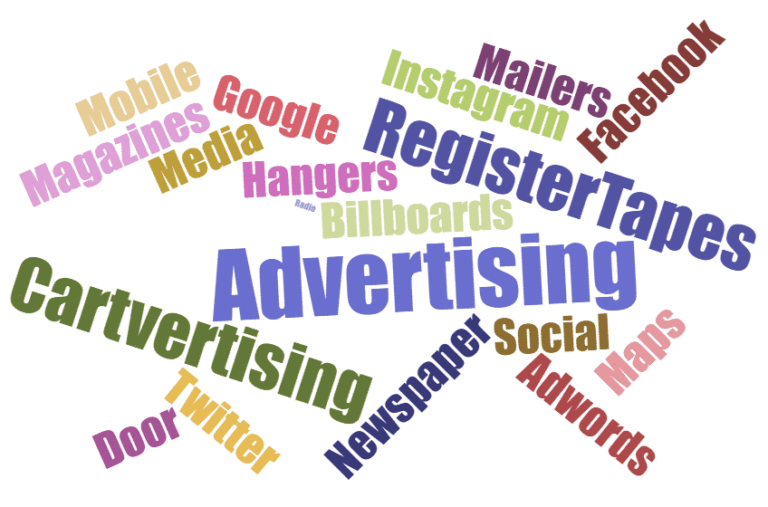How to Determine Your Sales Cycle
If you’re a business, you have an audience, and they have a sales cycle. It’s that easy. Understanding how to meet your customer every step of the way and push them towards your product? Now that’s a little harder.
This cycle can be triggered by a few different things, but for most companies, it’s almost always in flux. Imagine 200 customers running out of a different item at the same time. Depending on the item, it may be enough to get them back to the store right away. That being said, if it’s a wayward, last-minute product, it might not be enough to bring them back to your store specifically.
This is where grocery store advertising comes into play. Catching a consumer’s eye while they’re ambling around the store, or running in to grab one thing, can remind them that they need to visit your store too. If you take this opportunity to reinforce —or introduce— this need to your consumer, you can easily begin to build a loyal customer base. Predicting their movements and choosing the right supermarket advertisement can mean all the difference in the long run.
What is a Sales Cycle?
In its simplest form, the sales cycle is the process every customer goes through when purchasing a product or service. You can think of this as the journey the customer moves through from initially realizing they have a need —or want—to purchasing a solution for that need.
The job is then for you, the advertiser, to either appear as the solution for that need or to create it in the first place. We see this everywhere. For example, say you run out of taco shells the night your family is planning on making tacos. So, you run to the grocery store. There you see a supermarket advertisement promoting Taco Tuesday at a local restaurant, with $1 tacos! That’s prime grocery store advertising and an easy way to attract customers.
However, in another example, we might try to create the need before the consumer even realizes they have it. In this situation, a restaurant might splurge on television or in-store supermarket advertising to guarantee they reach the consumer and tell them why their product is so much better than their competitor’s. If their campaign works, the consumer may be stuck thinking about the item even before they run out of it and are more likely to try the advertised product.
Regardless, you can’t predict the sales cycle until you understand its three components, and that’s what we’re here for.
Awareness
Awareness is the very beginning of this cycle. Here the customer knows they have a need, but they are simply trying to understand how to solve the need. If the customer needs a certain product, they might think about what brand to buy and where they can find it. Issues like price, availability, and convenience will all factor in as they explore their options and the simple idea: I Need the Product.
In supermarket advertising, a customer’s trust in your brand can be tied to your market position. Your market position is built through the work you do to establish the optimal image for your brand. Some grocery store advertising campaigns will push consumers to think of a restaurant as affordable, while others might emphasize high-quality products to seem more high-end. Whichever route you take, the way your brand is perceived will either help or hurt you in the next stage.
Consideration
By the consideration phase, the customer knows the challenges they’ll face in finding the product they need and are comparing their different options. Right now, they’re just problem-solving a solution. Maybe they’re planning a big date and trying to figure out what restaurant to go to. Catching their eyes as they’re working through their options could be your way in.
At this point, the customer knows that they’re not going to travel very far to make the date, so they’re likely considering what local restaurant to go to. The right advertisement in the right grocery store can make all the difference and even shorten this phase to a matter of seconds.
Decision
Finally, the customer is narrowing in on a restaurant. If a customer has repeatedly seen your supermarket advertisement around town, then they may have your image locked in. Whether they’re curious about your service or already believe in the brand you’ve built, your grocery store advertising is what got them here.
For businesses like restaurants, advertising at the decision phase can be enough to bring in more business. Other advertisers like lawyers, realtors, or doctors may rely on building trust and credibility and will need to spend more time advertising in the earlier stages of the cycle. You can imagine a BOGO coupon for extractions at the dentist’s office may scare away more clients than it brings in.
Nevertheless, businesses like restaurants and dry cleaners can seriously benefit from catching the consumer’s eye right before they head over to their competitor. Even within a grocery store, in-store supermarket advertising can steer a consumer’s journey. Imagine a shopper is reaching for a pound of bacon and sees another brand is half off —now that’s a split-second decision.
Why Should I Advertise?
If you’re not advertising, you’re less likely to meet a consumer in their journey through the sales cycle. Even if you trust that you’ll retain the same audience, you’re relying solely on word of mouth to grow your base. And if you’re not advertising, someone else is.
Understanding the sales cycle is an easy way to understand how a consumer moves through the world and how grocery store advertising can help steer shoppers into your business. The more educated your approach to advertising is, the more carefully you can choose where to spend and who to target. This can ultimately help you hone your strategy and reel in your costs.
To truly move through the Awareness, Consideration, and Decision steps with confidence, you’ll need to figure out whether your approach is built on branding your business or triggering a direct response. We cover these topics in several other blog posts, so read on if you’re ready to get serious.



